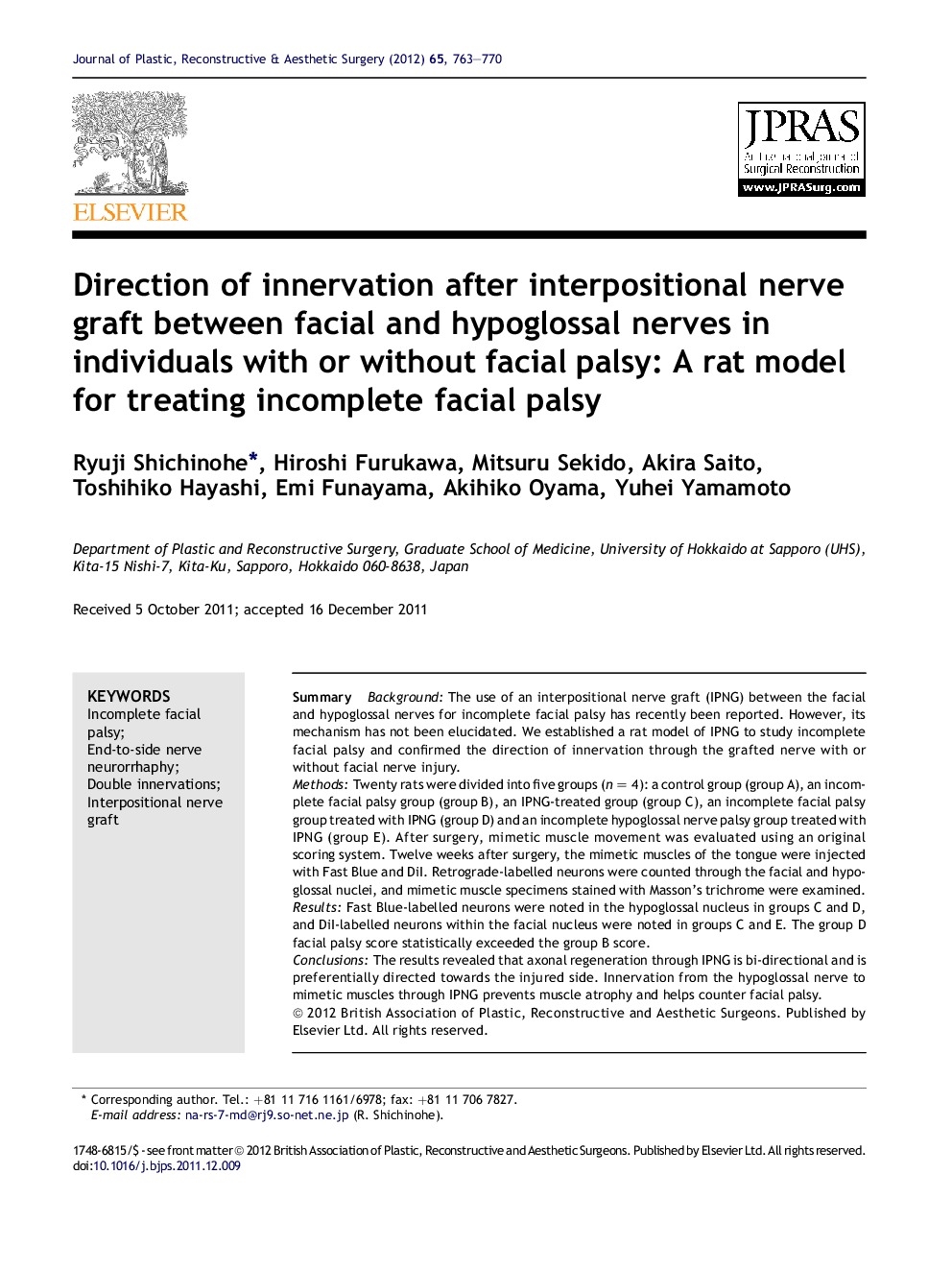| Article ID | Journal | Published Year | Pages | File Type |
|---|---|---|---|---|
| 4118453 | Journal of Plastic, Reconstructive & Aesthetic Surgery | 2012 | 8 Pages |
SummaryBackgroundThe use of an interpositional nerve graft (IPNG) between the facial and hypoglossal nerves for incomplete facial palsy has recently been reported. However, its mechanism has not been elucidated. We established a rat model of IPNG to study incomplete facial palsy and confirmed the direction of innervation through the grafted nerve with or without facial nerve injury.MethodsTwenty rats were divided into five groups (n = 4): a control group (group A), an incomplete facial palsy group (group B), an IPNG-treated group (group C), an incomplete facial palsy group treated with IPNG (group D) and an incomplete hypoglossal nerve palsy group treated with IPNG (group E). After surgery, mimetic muscle movement was evaluated using an original scoring system. Twelve weeks after surgery, the mimetic muscles of the tongue were injected with Fast Blue and DiI. Retrograde-labelled neurons were counted through the facial and hypoglossal nuclei, and mimetic muscle specimens stained with Masson’s trichrome were examined.ResultsFast Blue-labelled neurons were noted in the hypoglossal nucleus in groups C and D, and DiI-labelled neurons within the facial nucleus were noted in groups C and E. The group D facial palsy score statistically exceeded the group B score.ConclusionsThe results revealed that axonal regeneration through IPNG is bi-directional and is preferentially directed towards the injured side. Innervation from the hypoglossal nerve to mimetic muscles through IPNG prevents muscle atrophy and helps counter facial palsy.
